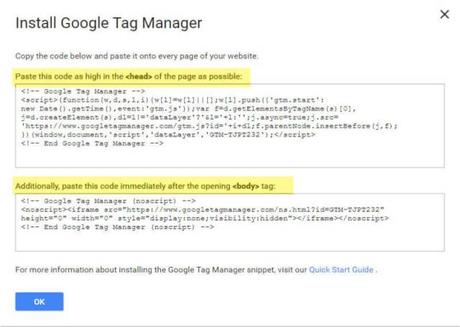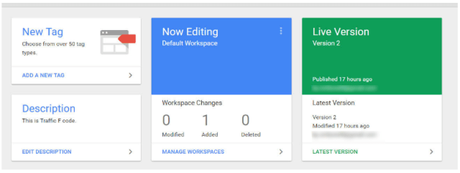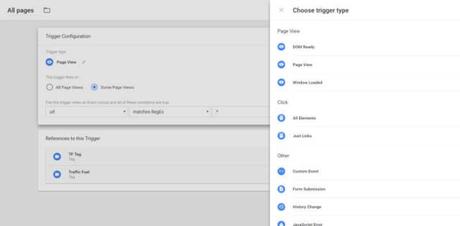Google Tag Manager (GTM) basically is a free tag management solution which is being provided by the Google. It an "Online Tool" through which you can easily manage various marketing and analytics tags on any website or on a mobile app. For our website, we just add many tags like advertisement tags and many more.
Google Tag Manager is the solution of tag management for single web interface system through which you can add and remove tags instantly. Your website will load faster by using the single tag manager it truly indicates that your website will not load slower just because of slow loading pages.
Here in this guide I will tell you how to use Google Tag Manager on your website and efficiently manage your Website tag. So let's get started with the guide.
What is a Tag?
A tag is basically a collection of JavaScript code in which you can easily get the measurement and the marketing data right from the website/mobile app and then after that, they send that data to the 3 rd party services.
Third party services like:
Earlier if we want to add any tags to our site, we need a developer to complete this task because there we need to manually add these snippets right to the source code of your web pages. Google Tag Manager made that easy.
I hope now you are a little familiar with tags now. Let's move on to the next step.
Benefits of Adding Tags via Google Tag Manager:

Why we use any product if it doesn't have any benefits? Here you will know the advantage of adding tags to your website with GTM.
Some of the benefits of using Google Tag Manager:
- Future-Proof Your Website
- Implementation Speed
- Security
- Flexibility
- Debug Options
- Version Control
- Workspace and Environment
- User Permission
- Built-In Tags
- Triggers for Common Actions
Along with these benefits you can easily: add, remove, enable and disable any of the tags on your website. You have the authority to change any tags on your website.
Getting Started with Google Tag Manager
To get started with Google Tag Manager (GTM) you need to go the login page. If you have existing Google Analytics account. You have other alternatives, log in to your Google account and get ready to set your tags.

In the beginning, you need to give your account name. Here you can add account name just same as the company name due to that you will easily find and manage any sites you have in GTM. I will recommend you here just use separate account per company along with one container per site.
Once you will complete the account set up, you will create the first container. You can name the container and give the instruction where you want to use that container:

After the choosing the container location, you will need to accept the terms and services. Here just after that, you will get two types of script that you can put on your site.

You should place the GTM snippet on every page of your site. Keep one thing in when you are using Google Tag Manager the never use any other tag management system along with it because it may cause errors and issues.
Right after the adding of the Google tag Manager Snippet code to your website your, Google Tag Manager is ready to go.

With time your containers will grow and you may find some difficulty in tracing all the tags, triggers and variables. You can here create folders which will help you in organizing all the tags. The pros of creating folder will help you in groupings of all the tags due to that you will find easy to update and manage the tags.
Setting up of Triggers & variables:
When a webpage loads or some other user interaction occurs the tags basically execute or fire. Here in the Google Tag Manager, you will have to define "Triggers" with the tags just to tell GTM when to fire a tag.
An example of a trigger is the "Page View" trigger in which if you want any tag fire when any specific page loaded here.

Basically, you need to tell GTM what initiative to take when any certain action is being taken by the user. The process setting up the triggers is very simple just go and choose the trigger type.
Here the work of variables is to define the triggers and actually tells about the data they send usually. You can set up a variable when someone goes to any specific pages or they click and checkout button or download anything.
Don't forget to Publish:

After making many changes in the GTM, don't ever forget to publish because it will not work without publishing it. You will always need to publish when you will add or edit tags, triggers, and variables in the workspace.
Also, read:EndNote: Google Tag Manager
Newbies may find it difficult but, trust me once you will start using Google Tag Manager, you will appreciate it because it will make many complex things easier for you. You should always implement tags carefully and just by using the free tag assistance.
If you have more than one site then GTM will be a useful tool for the tag management. Give your valuable feedback and always feel free to ask anything in the comment section. I hope you liked the guide how to set up Google Tag Management on your site. Share this article on all the trending social media platforms.


